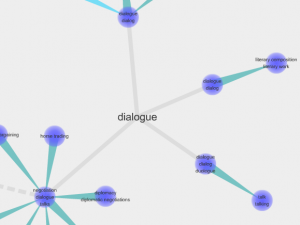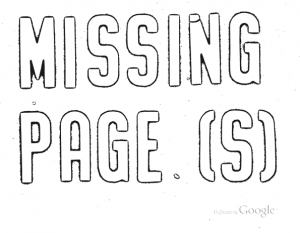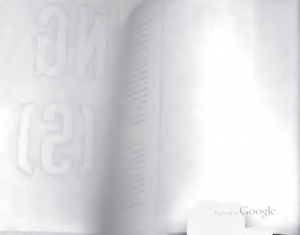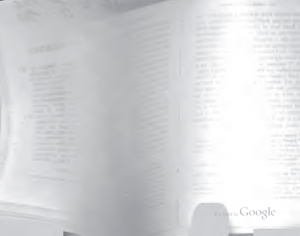I’ve been reading some Martin Heidegger to try to understand how he approaches technology and methodology. An interesting essay in this regard is The Age of the World Picture. Here is an outline of the argument regarding research and method:
- P. 114. Metaphysics, in the specific interpretation of what is, grounds an age. (He will return at the end to the metaphysics of our age which turns out to be representation and how we make scientific pictures of things like worlds. Thus the title of the essay only makes sense in an age represents the world as an object of which you could make a picture with science.)
- P. 115. Science is one of the essential phenomena of the modern age (along with machine technology, art into aesthetics, human activity consumed as culture, and the loss of Gods.)
- P. 117. The essence of science in this age is research. “knowing establishes itself as a procedure within some realm of what is, in nature or in history.”
- P. 117. “Procedure does not mean here merely method or methodology. For every procedure already requires an open sphere in which it moves. And it is precisely the opening up of such a sphere that is the fundamental event in research.” The opening up or fundamental event in establishing a science is a projection that “sketches out in advance the manner in which the knowing procedure must bind itself and adhere to the sphere opened up.”
- P. 119. Rigor: “Science becomes research through the projected plan and through the securing of that plan in the rigor of procedure. Projection and rigor, however, first develop into what they are in methodology.”
- P. 119-20. Methodology: “Methodology, through which a sphere of objects comes into representation, has the character of clarifying on the basis of what is clear – of explanation.”
- P. 120. A science doesn’t become research through experiment, but it is when the sphere is opened through projection and rigor that it becomes research and science in the modern sense.
- P. 121. “Source criticism in the historical humanistic sciences corresponds to experiment in physical research.” He sees the historical disciplines as very similar when they become research to science.
- P. 123. Ongoing activity is a fundamental event for modern science and research. “research is not ongoing activity because its work is accomplished in institutions, but rather institutions are necessary because science, intrinsically as research, has the character of ongoing activity.” H. compares research to erudition. Erudition is being replaced in the historical sciences by the ongoing activity or busyness of research which creates the need for institutions to support it. That is the punch line for humanities computing – we are about research in Heidegger’s sense of instituionally supported project ongoing activity. H. describes us thus,
The scholar disappears. He is succeeded by the research man who is engaged in research projects. These, rather than the cultivating of erudition, lend to his work its atmosphere of incisiveness. The research man no longer needs a library at home. Moreover, he is constantly on the move. He negotiates at meeting and collects information at congresses. (p. 124)
- P. 133. “The fundamental event of the modern age is the conquest of the world as picture. The word ‘picture’ [Bild] now means the structured image [Gebild] that is the creature of man’s producing which represents and sets before.” To ask about the picture of the world is to ask from a metaphysical stance that takes the world as something that can be represented and set before us. That is why the title of the essay tells you more about age in which it is asked.
Heidegger ends on a strange not about the Gigantic leading into a Shadow on 134:
A sign of this event is that everywhere and in the most varied forms and disguises the gigantic is making its appearance. In so doing, it evidences itself simultaneously in the tendency toward the increasingly small. We have only to think of numbers in atomic physics. The gigantic presses forward in a form that actually seems to make it disappear – in the annihilation of great distances by the airplane, in the setting before us of foreign and remote worlds in their everydayness, which is produced at random through radio by a flick of the hand. Yet we think too superficially if we suppose that the gigantic is only the endlessly extended emptiness of the purely quantitative. We think too little if we find that the gigantic, in the form of continual not-ever-having-been-here-yet, originates only in a blind mania for exaggerating and excelling. We do not think at all if we believe we have explained this phenomenon of the gigantic with the catchword “Americanism” (Appendix 12).
The gigantic is rather that through which the quantitative becomes a special quality and thus a remarkable kind of greatness. Each historical age is not only great in a distinctive way in contrast to others; it also has, in each instance, its own concept of greatness. But as soon as the gigantic in planning and calculating and adjusting and making secure shifts over out of the quantitative and becomes a special quality, then what is gigantic, and what can seemingly always be calculated completely, becomes, precisely through this, incalculable. This becoming incalculable remains the invisible shadow that is cast around all things everywhere when man has been transformed into subiectum and the world into picture (Appendix 13).











